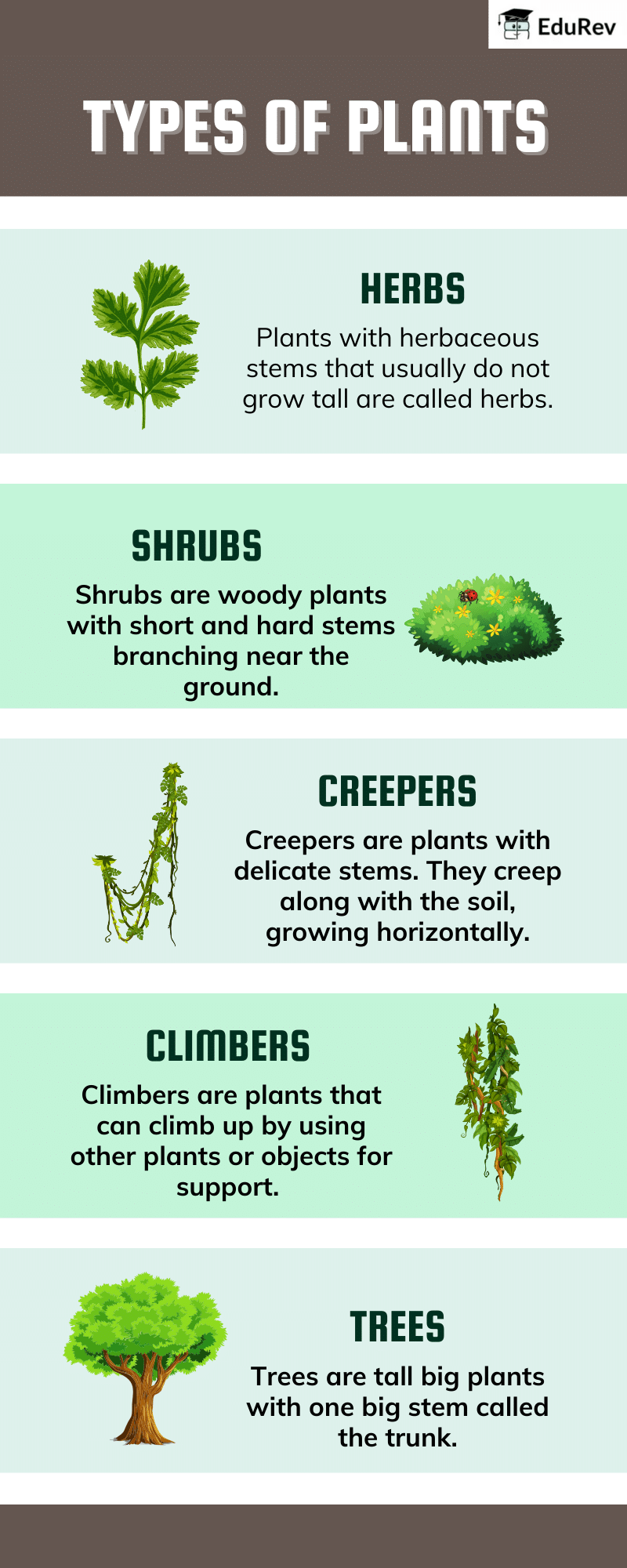Class 3 Exam > Class 3 Notes > EVS Class 3: The World around us (Our Wondrous World) > Poster: Getting to Know Plants
Poster: Getting to Know Plants | EVS Class 3: The World around us (Our Wondrous World) PDF Download

The document Poster: Getting to Know Plants | EVS Class 3: The World around us (Our Wondrous World) is a part of the Class 3 Course EVS Class 3: The World around us (Our Wondrous World).
All you need of Class 3 at this link: Class 3
|
30 videos|128 docs|14 tests
|
FAQs on Poster: Getting to Know Plants - EVS Class 3: The World around us (Our Wondrous World)
| 1. What are the basic parts of a plant? |  |
Ans. The basic parts of a plant include the roots, stem, leaves, flowers, and fruits. Roots anchor the plant and absorb water and nutrients from the soil. The stem supports the plant and transports materials between the roots and leaves. Leaves are where photosynthesis occurs, allowing the plant to make food. Flowers are involved in reproduction, and fruits contain seeds for new plants.
| 2. How do plants grow? |  |
Ans. Plants grow through a process called photosynthesis, where they use sunlight, carbon dioxide from the air, and water from the soil to produce food. This food is then used to grow and develop the plant. Additionally, plants grow by cell division, where new cells are formed, allowing them to increase in size and develop new structures.
| 3. Why are plants important for the environment? |  |
Ans. Plants are crucial for the environment as they produce oxygen through photosynthesis, which is essential for the survival of most living organisms. They also help in maintaining the balance of ecosystems by providing habitats for animals, preventing soil erosion, and contributing to the water cycle. Additionally, plants absorb carbon dioxide, helping to mitigate climate change.
| 4. What are the different types of plants? |  |
Ans. There are several types of plants, including flowering plants (angiosperms), non-flowering plants (gymnosperms), ferns, and mosses. Flowering plants produce flowers and seeds, while non-flowering plants, like conifers, reproduce through seeds without flowers. Ferns reproduce using spores and do not have seeds, while mosses are small, non-vascular plants that also reproduce with spores.
| 5. How can we take care of plants? |  |
Ans. To take care of plants, it is important to provide them with the right amount of water, sunlight, and nutrients. Regularly check for pests and diseases and remove any dead or damaged leaves. Additionally, ensure that plants have enough space to grow and consider using fertilizers to provide essential nutrients for healthy growth.
Related Searches





















